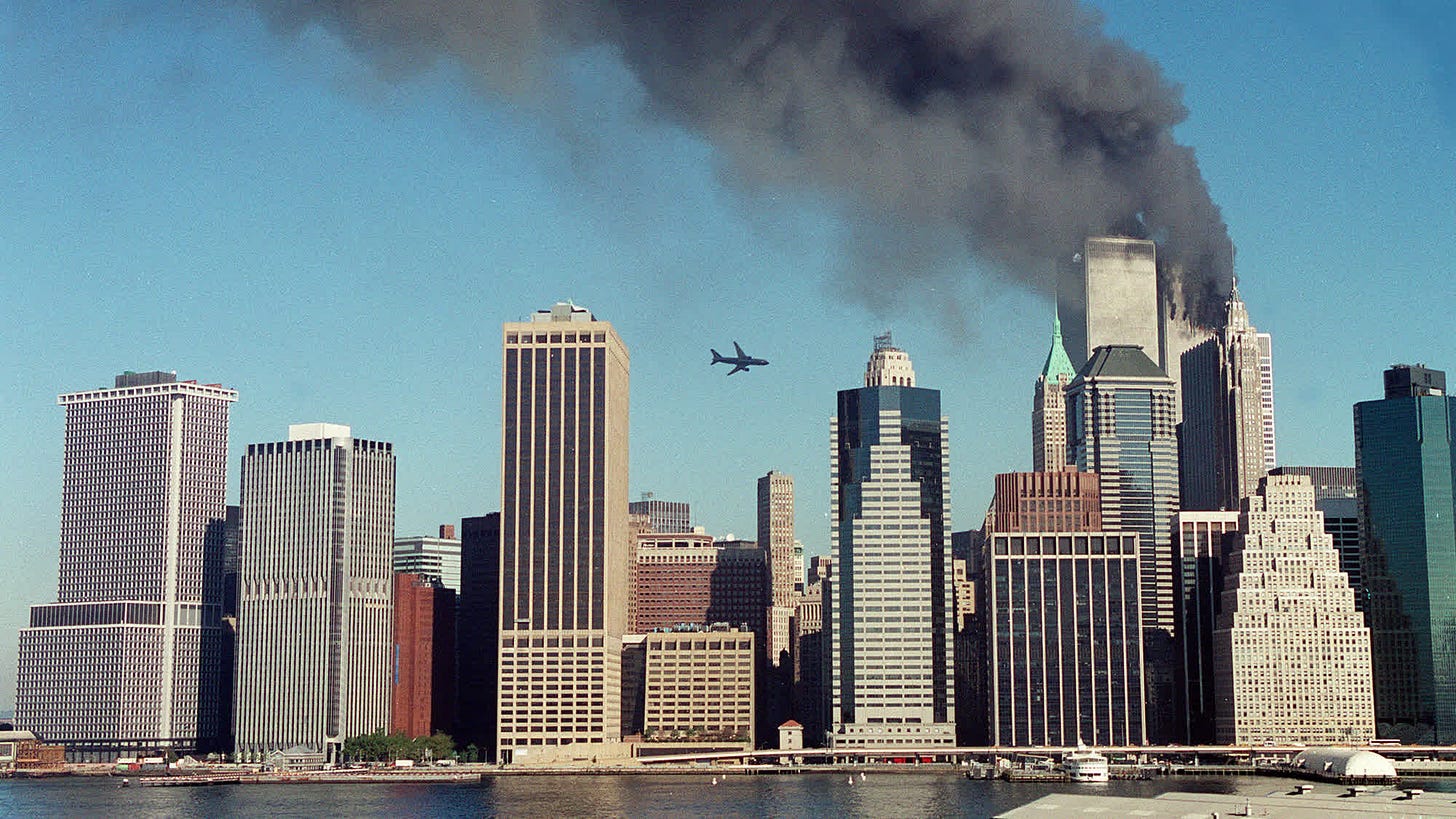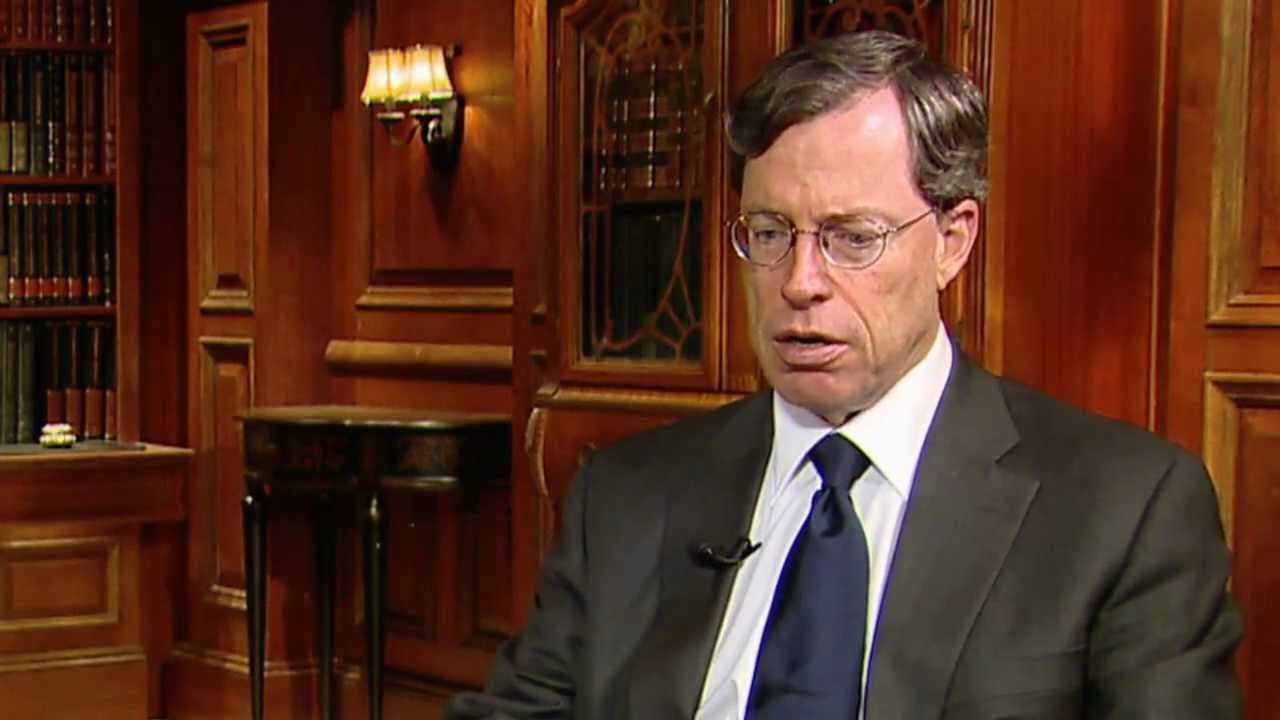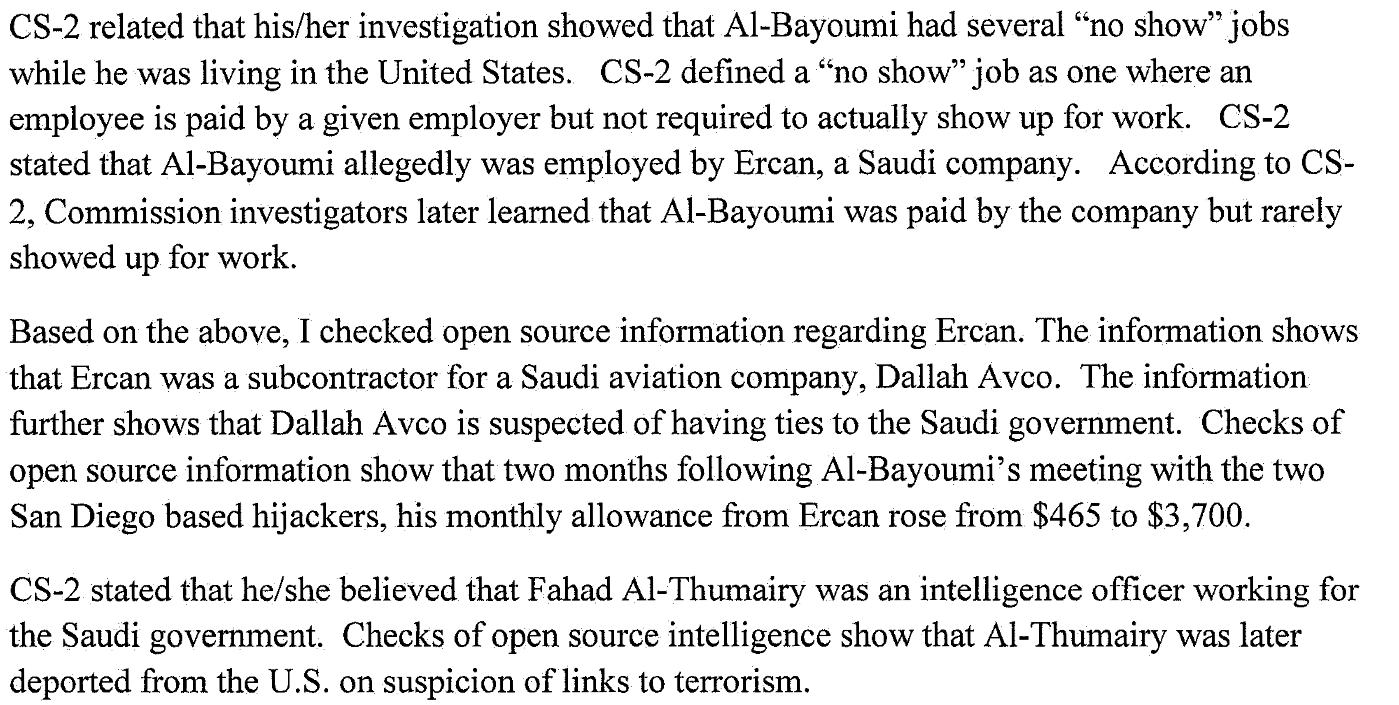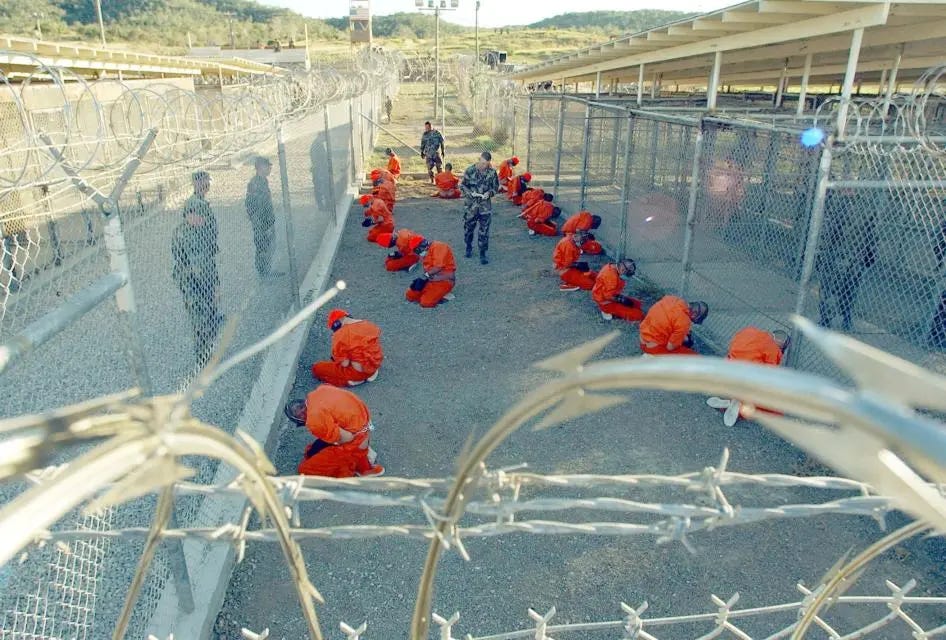Court Filing Exposes 9/11 Coverup
All my investigations are free to read, thanks to the enormous generosity of my readers. Independent journalism nonetheless requires investment, so if you value this article or any others, please consider sharing, or even becoming a paid subscriber. Your support is always gratefully received, and will never be forgotten. To buy me a coffee or two, please click this link.
This year’s anniversary of 9/11 passed without mainstream mention. Almost two-and-a-half decades on, the media appears to have lost all interest in that fateful, world-changing day. This is despite the April 2023 release of a bombshell court filing by the Office of Military Commissions, which concluded at least two of the alleged hijackers were CIA assets, having been recruited “via a liaison relationship” with Saudi intelligence. The same document offers illuminating insight into how the 9/11 Commission buried this, among other inconvenient truths.
Central to the coverup was Commission chief Philip Zelikow. Commission investigator Dana Leseman, dubbed “CS-2” in the filing, told representatives of the Office of Military Commissions - the legal body overseeing the prosecution of 9/11 defendants - Zelikow consistently sought “to blunt” inquiries “into Saudi involvement with the hijackers.” Leseman was formally charged with investigating “the possible link” between Riyadh and the 9/11 attacks, but Zelikow was determined she would not succeed.
His wrecking efforts included blocking Leseman’s requests to conduct interviews with certain individuals of interest, and obtain documents that could shed light on Riyadh’s foreknowledge of, if not active participation in, 9/11 - and the CIA’s by extension. More widely, Zelikow had exclusive control over who the Commission did and did not interview, and on what topics, strictly limiting which witnesses were grilled, and the evidence heard.
Leseman was fired by Zelikow in April 2003, after obtaining a classified index to the House and Senate’s joint inquiry into 9/11, “from a source other than official channels.” The index listed sensitive documents possessed by the FBI and other US government agencies, detailing “suspected Saudi involvement in the 9/11 attacks.” While “a minor security violation”, Zelikow summarily terminated Leseman and seized the index. News of her defenestration didn’t leak at the time. No other staffer was permitted to view the document thereafter.
Elsewhere in the filing, Bill Clinton’s counter-terror czar Richard Clarke, who has long-charged the CIA had a relationship with some of the alleged hijackers, told investigators Zelikow was explicitly selected by George W Bush’s National Security Advisor Condoleezza Rice “to prevent damage to the Bush Administration by blocking the Commission’s line of inquiry into the Saudi connection.”
Clarke further asserted his belief the Saudi-led effort to penetrate Al Qaeda “may have [been] organized by high level employees at the CIA,” and “most of the records” of the top-secret mission “were destroyed in an effort to cover up the operation.” Tellingly, Clarke relayed how after he expressed his opinion the CIA “was running a ‘false flag’ operation to recruit the hijackers” publicly, “he received an ‘angry call’ from George Tenet,” CIA Director during 9/11. Despite his wrath, Tenet “did not deny the allegation.”
‘Act Preemptively’
Philip Zelikow’s appointment to head the 9/11 Commission was the culmination of the body’s thoroughly troubled gestation. Initially, the Bush administration vehemently rejected mass public demand for any official investigation into the attacks. It was not until November 2002 the Commission was begrudgingly established at long last. Its initial chief, Henry Kissinger, resigned within mere weeks due to conflicts of interest. This included awkward questions over whether he counted any Saudi Arabians - particularly individuals with the surname bin Laden - as clients.
Zelikow had a panoply of conflicts of interest of his own, some of which were well-established at the time. Others only emerged when the Commission was underway. For one, he enjoyed a long-running relationship with Condoleezza Rice, and was part of George W Bush’s transition team, overseeing the new administration’s National Security Council taking office. This process led to the White House’s Counterterrorism Security Group being downgraded, and its chief Richard Clarke demoted, creating layers of bureaucracy between him and senior government officials.
A secret report produced by Clarke’s team in January 2000 concluded US intelligence was ill-equipped to respond to a major, ever-growing domestic terror threat. It outlined 18 recommendations, with 16 accompanying funding proposals, to “seriously weaken” Al Qaeda. Its findings were ignored by the Bush administration. Numerous memos authored subsequently by Clarke, urgently requesting high-level meetings to discuss Al Qaeda and outline strategies for combating the group at home and abroad, were similarly disregarded.
Meanwhile, in September 2002, the Bush administration submitted a 31-page document, The National Security Strategy of the United States, to Congress. It set out a very clear blueprint for the looming War On Terror, calling for a massive buildup in US military spending, and Washington to “act preemptively” against “rogue states”, such as Iraq. While it bore the President’s signature, the incendiary document was secretly written by none other than Zelikow.
His authorship only became known by the Commission when the investigation was almost over, prompting several key staffers and a commissioner to threaten to quit. The body’s chiefs Thomas Kean and Lee Hamilton were apparently unaware when Zelikow was appointed. The pair subsequently charged the Commission was set up to fail. Its investigations got off to a glacial start, in part due to funding issues. The Commission was initially given a paltry $3 million dollars to complete its work.
By contrast, a concurrent probe of the space shuttle Columbia’s crash, in which just seven people died, was granted $50 million. In March 2003, due to repeated demands from its staffers, the Commission was allocated a further $9 million - $2 million less than requested. Despite these grave teething problems, that same month - three months into the 16-month-long probe, and before a single hearing had even been convened - Zelikow produced a complete outline of the Commission’s final report.
The finished article, released in July 2004, followed Zelikow’s preordained design very closely. In the intervening time, he personally rewrote several statements submitted by staffers, which informed the report’s findings. In one instance, he amended a statement to strongly insinuate, without making the direct accusation, Saddam Hussein and Al Qaeda had a relationship of some kind, horrifying its authors. This false claim was frequently peddled by White House officials to justify the criminal 2003 Anglo-American invasion of Iraq.
In October that year, the Commission determined NORAD - which coincidentally ran a training exercise on 9/11 almost exactly simulating the real-life attacks - was withholding information. Investigators sought to subpoena the Department of Defense, but Zelikow intervened to prevent one being issued. The next spring, commissioners had become so frustrated with Federal Aviation Authority and Pentagon officials brazenly lying to them, they mulled pursuing criminal charges for obstruction of justice. Zelikow again connived to ensure this didn’t happen.
‘Saudi Individuals’
Despite Zelikow’s obstruction, 9/11 Commission investigators uncovered several leads tying Saudi Arabia - and thus the CIA - to the attacks. The Office of Military Commissions filing reveals how one investigator - “CS-1” - twice interviewed radical cleric and Saudi diplomat Fahad Thumairy, at government complexes in Riyadh. He was interrogated about his relationship with Nawaf Hazmi and Khalid Mihdhar, alleged hijackers confirmed to have been recruited by the CIA, and Omar Bayoumi, widely suspected to have been their handler.
Saudi security service operatives were present at both interviews, and CS-1 felt Thumairy was “less than 100% forthcoming” under examination. While he spoke English fluently, he asked for “controversial” questions to be translated into Arabic. CS-1 believed this indicated Thumairy “was being deceptive.” He also “seemed to react” when quizzed about his relationship with Bayoumi.
Bayoumi met Hazmi and Midhar at a restaurant at Los Angeles airport immediately upon their arrival in the US in January 2000, then struck up a close bond with them. Dana Leseman asserts in the filing the FBI had Bayoumi “under investigation prior to the 9/11 attacks,” and he “was receiving substantial sums of money” from Saudi Arabia’s Washington DC embassy. Funds were surreptitiously “funneled from accounts” belonging to Haifa bin Faisal, wife of Bandar bin Sultan, Riyadh’s ambassador to the US.
Before her firing, Leseman’s investigation revealed Bayoumi had several “no show” jobs while residing Stateside - “where an employee is paid by a given employer but not required to actually show up for work.” One “no show” role was with Saudi company Ercan, the offices of which he visited “rarely”. The filing notes how two months after Bayoumi’s meeting with Hazmi and Midhar, his monthly salary from Ercan rose from $465 to $3,700.
Leseman was convinced Fahad Thumairy “was an intelligence officer working for the Saudi government.” In May 2003, he was denied entry to the US on suspicion of links to terrorism, although neither arrested nor questioned over the matter. It was not until 13 years later former 9/11 commissioner John Lehman broke cover, admitting the investigation uncovered “an awful lot of participation by Saudi individuals” - some of them government employees - “in supporting the hijackers.”
In ensuring Riyadh’s wide-ranging involvement in 9/11 remained hidden from public view, Zelikow was very effectively insulating Alec Station - the CIA’s Osama bin Laden tracking unit - which ultimately ran the operation to recruit Hazmi and Midhar if not other alleged hijackers via the Saudis, from scrutiny or consequence. Concurrently, members of that unit were assisting in Zelikow’s coverup, having been promoted since the attacks to oversee the CIA’s post-9/11 torture program.
‘Draconian Measures’
The Senate Intelligence Committee’s investigation into the torture program found CIA “enhanced interrogation” yielded no worthwhile intelligence whatsoever. In many cases, detainees “fabricated” information, telling their interrogators what they wanted to hear to limit their abuse. The use of techniques honed under the Agency’s MKULTRA mind control program suggests eliciting false testimony may have been a deliberate objective of the CIA. Such bogus disclosures could be used to justify the War on Terror, while obscuring Alec Station’s recruitment of alleged 9/11 hijackers.
Zelikow was also in a position to influence what CIA detainees were asked - and in turn, the answers they gave. In 2008, an anonymous US intelligence official revealed the Commission was permitted to give the Agency questions to pose to prisoners. Its final report relied heavily on CIA interrogations, with Zelikow admitting “quite a bit, if not most” of the official narrative of the 9/11 attacks was based on information acquired via torture. In other words, politically convenient fabrications and falsehoods.
This fraudulent narrative endures today, unquestioned by news outlets and much of the public. Universal mainstream omertà on the court filing’s explosive contents amply indicates the 9/11 coverup remains in place, with the media active conspirators. Since the Commission report’s release, Zelikow has largely faded into obscurity, the many public controversies around his role as executive director forgotten. Yet, there are grounds to believe he may know even more than he suppressed while heading the Commission.
In November 1998, Zelikow coauthored an article for the Council on Foreign Relations’ journal Foreign Affairs. In it, he predicted a devastating terror attack in the US in the near future - for example, the World Trade Center’s destruction. “Such an act of catastrophic terrorism would be a watershed event in American history,” Zelikow forecast. “Like Pearl Harbor, this event would divide our past and future into a before and after.” He went on to precisely outline all that followed 9/11:
“The United States might respond with draconian measures, scaling back civil liberties, allowing wider surveillance of citizens, detention of suspects, and use of deadly force. More violence could follow, either further terrorist attacks or US counterattacks. Belatedly, Americans would judge their leaders negligent for not addressing terrorism more urgently…The greatest danger may arise if the threat falls into one of the crevasses in the government’s overlapping jurisdictions, such as the divide between ‘foreign’ and ‘domestic’ terrorism or ‘law enforcement versus ‘national security’.”






Given that Al Qaeda (the effing toilet, ffs) was created by the CIA and worked as proxies for the CIA since its inception, and in multiple places, before and after 9/11 (e.g. Yugoslavia, and most recently in Syria), it would be stretching the limits of absurdity to breaking point to believe that 9/11 was the one time in Al Qaeda's entire history when they were not acting as CIA proxies.
Well, a proxy on both their houses, I say.
While I'm certain that everything in this is true - it's still misleading and (unintentionally, by Kit) deceptive.
The Saudis were providing the 'FALL GUYS' in the story. The 'patsies' - the Oswald or Sirhan, from which the Legend would be built, by design, from long before the event(s).
The cold trail leading back to the Saudi Kingdom, was created deliberately, as a 'limited hangout' fallback position, for when people started asking questions - something which Zelikow appears to have understood would occur eventually - even back in 1998.
When we focus upon alleged Saudi involvement, with the alleged 'hijackers' - we are still reinforcing parts of the physically impossible (and intellectually, exceedingly credulous) narrative - while distracting from the direct involvement of Dick Cheney (and Rumsfeld, Rice, and others within the selected Regime) and the Zionist AbomiNation State. CS-2 is being entirely honest about the 'red herring' information that she was given - which is why 'they' want this story out there.